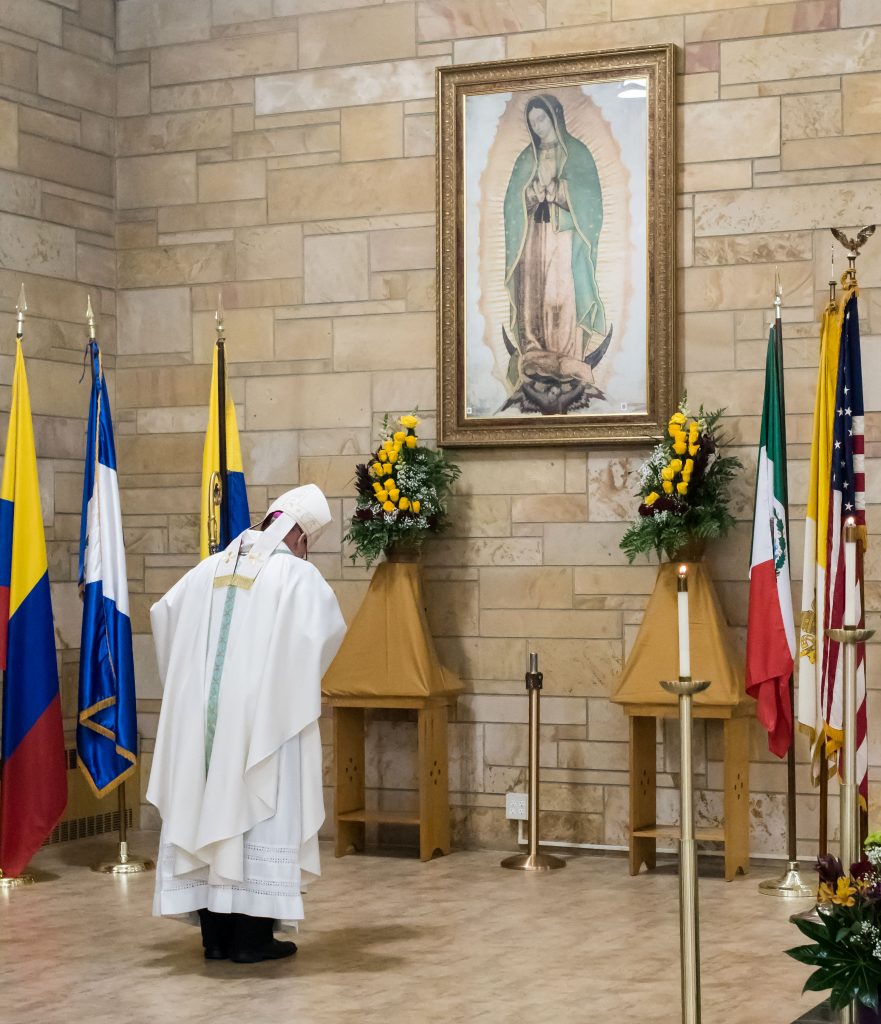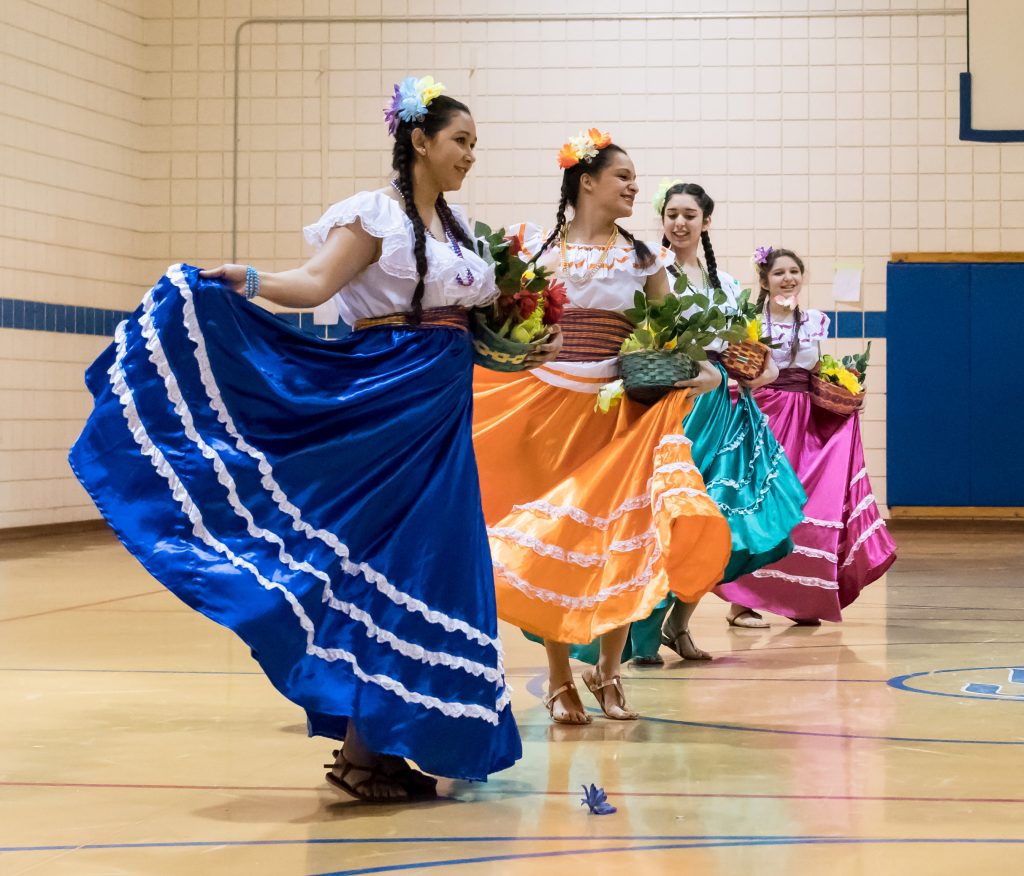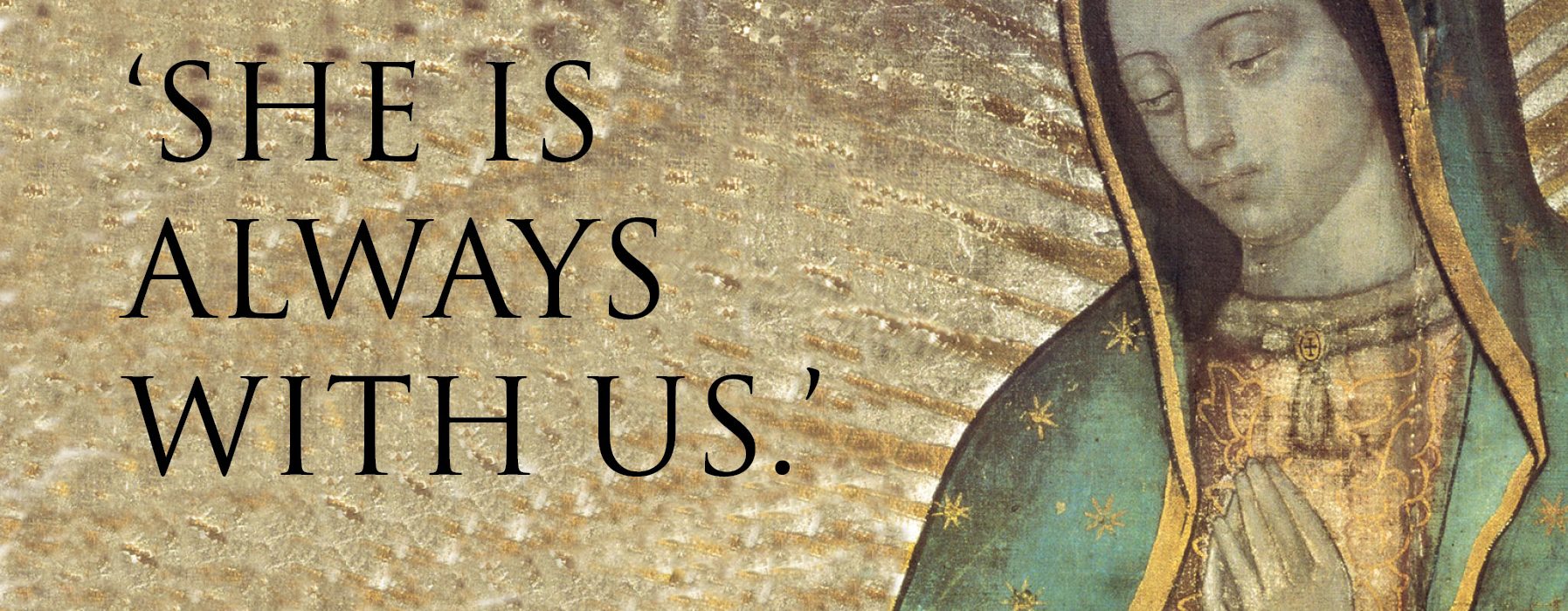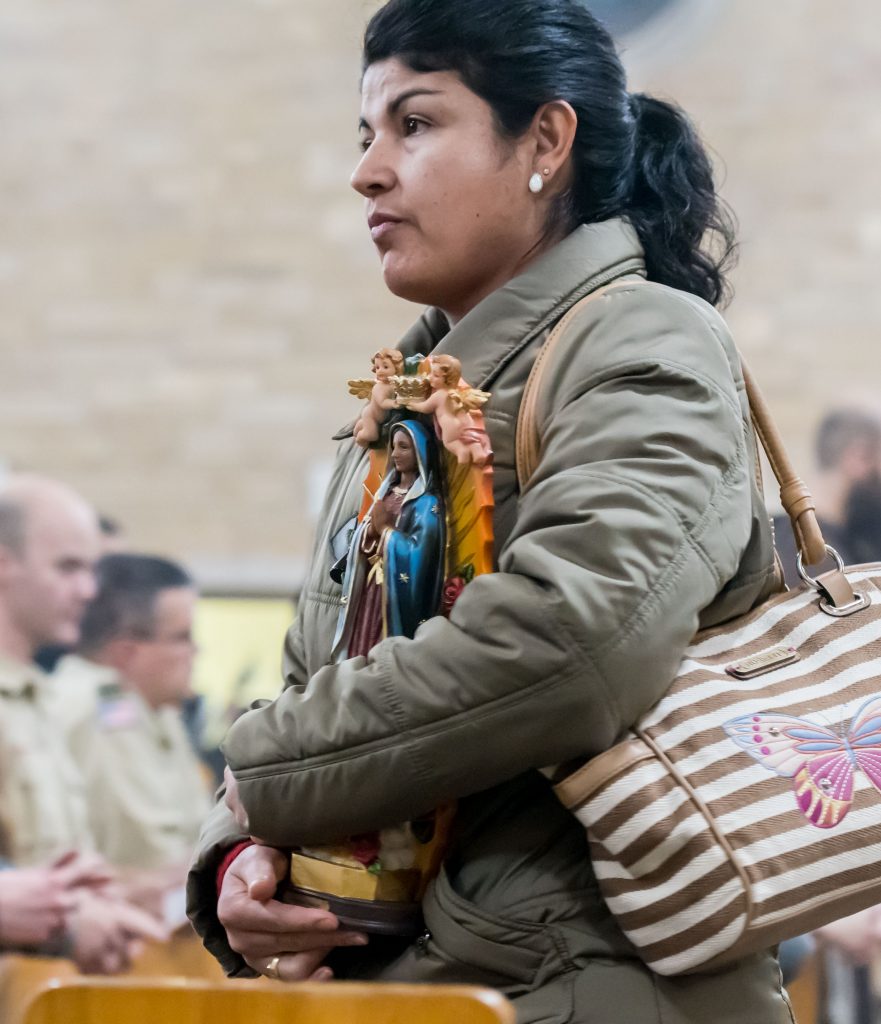December 4, 2018 // Diocese
‘She is always with us’: The feast of Our Lady of Guadalupe
Click here for a listing of festivities honoring Our Lady of Guadalupe around the diocese.
For the last 70 years, the presence of Our Lady of Guadalupe was visible everywhere Maria Espinoza lived. From Laredo, Mexico, to East Chicago; New Laredo, Texas, to South Bend, she kept running into the image of Our Lady of Guadalupe and living under her protection.
“Everywhere I lived, there is Our Lady — wherever I went. So, either she’s following me or I’m following her. It is one of the two. But I think I’m following her,” she said, with the knowing smile of a faith-filled life.
As a little girl in Mexico, growing up next door to her grandmother, Our Lady of Guadalupe Church sat kitty-corner to their homes. “My earliest memory of seeing her was at church. The bells would ring three times — the first was a warning bell — and by the third, you should be inside the church!” she remembered.

Bishop Kevin C. Rhoades prepares to bless with holy water an image of Our Lady of Guadalupe, patroness of the Americas, at St. Joseph Church, Fort Wayne, on her feast day last year. Novenas and celebrations to honor Our Lady of Guadalupe are underway in many parishes of the diocese and will culminate on Dec. 12. — Joe Romie
Her father went to work in East Chicago for years at a steel mill, sending money home to his family on the northern Mexican border town. By the time Espinoza was 5 years old, her mother had had enough and wanted the family to be together; the family applied for papers and Espinoza, her two older brothers and younger 3-year-old sister moved to cold, snowy Illinois.
Espinoza found herself adapting to a new culture and learning a new language. But one thing was the same: Her family lived right down the alleyway from a church whose name and patroness were Our Lady of Guadalupe. Our Lady’s proximity brought her great consolation as Espinoza adapted to American life.

Folkloric dancers perform following feast day Mass last year at St. Joseph Church, Fort Wayne. — Joe Romie
She remembers looking around her new kindergarten classroom, shyly watching all the children happily play, as her teacher spoke to her in English. Espinoza answered, “No sé,” or “I don’t know,” to all her questions, which led the teacher to place her in a special education classroom. Her father found out and had Maria moved back to the main classroom with a translator, who taught Maria directly until she learned English. Espinoza did well in school and quickly began interpreting for her parents. The family grew.
With one paycheck and 10 children, money was tight. Still their mother cared for them well, knowing how to add rice, potatoes or beans to stretch a pound of meat. The children helped too, and began working in the fields in Lansing, Michigan, and Illinois. Espinoza remembers picking onions first, then tomatoes, green beans, cabbages and cherries, along with regular adult migrant laborers.
In 1967, an accident caused her father to retire, and he moved to Texas. Through it all Espinoza felt Our Lady of Guadalupe’s presence, saying, “I am with you.”
“She means the world to me. You see, now my Mom is gone, so I pray with her. Every day at 11:30 a.m. to 12, I pray the rosary. If I’m doing something, I stop and ask, wait, what time is it? What time is it? 11:30? OK. Whatever I’m doing, I stop and pray with her.”
Espinoza’s favorite way to pray the rosary is with Sister Angelica, on TV. The singing of the Hail Mary “hits me every time.” Her husband and 2-year-old nephew often join in with her. The first time her young nephew sang, “That touched my heart – that he was singing!” she recalled.
“I tell my seven sisters on the phone, ‘Goodbye! It’s almost time for the rosary!’ The one who is in a different time zone, she forgets. I have to say ‘Marta, don’t call me between 11:30 and 12,’ or ‘Call back later.’ Praying with her Our Lady of Guadalupe and being a part of Guadalupanas, she is always in my heart.”
Espinoza is still learning about Our Lady of Guadalupe. Because she was raised in the U.S., she feels she needs to know more about her and about other Mexican religious and cultural traditions.
A large statue of Our Lady of Guadalupe stands on Espinoza’s mantle. The image of Mary, like Espinoza herself, comes from over the border. There are pictures of Our Lady of Guadalupe all over her home as well. “When people come inside, they (see her and) bless themselves. And then look around,” she said, imitating wide eyes of surprise, “and they see another, and another!”
Espinoza feel as though Our Lady of Guadalupe’s caring presence has been pervasive throughout her life, like a sweet-smelling perfume.
“She is always with us. At the time of sorrow, when you really need help, when I am feeling depressed and down, she was there — calming me down, saying it will be OK. She is something deep in my heart,” Espinoza explained in a calm demeanor.
Espinoza is currently the president of the Guadalupana Society at St. Adalbert and St. Casmir parish. The Guadalupanas, or followers of Our Lady of Guadalupe, meet once a month to pray, do good works of charity and are most well-known, for planning for her feast day celebrations. Las Guadalupanas have a faithful presence at wakes too, where they pray a rosary with the parishioner’s family and accompany the deceased loved one.
This year is the group’s 50th anniversary, so the feast day celebrations will have special significance for Las Guadalupanas. On the vigil of her feast day, the evening of Dec. 11, the celebration will include traditional dancing by the “matlachines,” or Aztec-style folkloric dancers and drummers; “Las Mañanitas,” a traditional Mexican birthday song sung in praise and thanksgiving to Our Lady of Guadalupe on her birthday; and a beautiful “Misa” or Mass.
Espinoza has fond memories of Our Lady of Guadalupe’s feast day in Mexico, sitting on her family’s front porch with her extended family on a chilly December evening as they watched the native dancing and live music, praying with the bishop in the church across the street and enjoying delicious feast day foods such as tacos, corn on the cob and a hot chocolate and oatmeal drink. She hopes to ensure that this authenticity, which has been brought to Sts. Adalbert and Casmir, continues, along with the cultural and spiritual dimensions of a devotion to Our Lady of Guadalupe that have now been passed down to the youth — who want to start their own group of matlachines.
Reflecting on her first year as president of the Guadalupanas, Espinoza explained that if it were not for Our Lady of Guadalupe, the work might have been too much. “To tell you the truth, I wouldn’t have been able to do it without her prayers, without her being in my life. It would have been easier to say no. But she is right behind me, tapping my shoulder, saying ‘Yes, Maria. You can do it! Try.’ I just love her!”
The best news. Delivered to your inbox.
Subscribe to our mailing list today.







